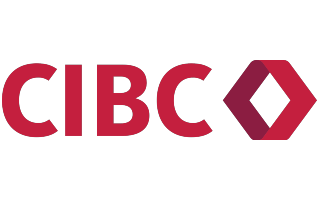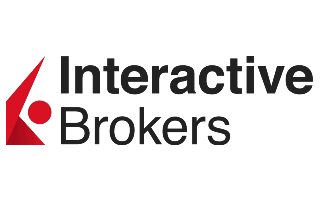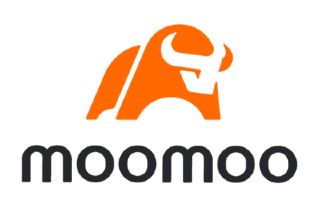You’ve got $5,000 to invest in Canada, and you’re wondering where to put your money for the best return. Though it isn’t enough to retire on, $5,000 is plenty to build a strong foundation for your investment portfolio.
How to invest $5,000 in Canada
Before you build your investment portfolio, you need to determine two things:
- Your goals
- Your risk tolerance
These will inform your investments. For instance, Guaranteed Investment Certificates (GICs) and bonds are less risky, but they also have modest returns. Stocks are known for having high risk, but they also have the highest potential returns. Weigh the risk and reward of each investment type and consider how much you’re willing to potentially lose in hopes of higher returns.
Here’s what a $5,000 portfolio might look like:
| Investment type | Percentage |
|---|---|
| GICs and bonds | 15% to 50% |
| Stocks, ETFs and mutual funds | 50% to 75% |
| Real estate and alternative investments | 0% to 25% |
Before you invest $5,000
Before you invest $5,000, consider the following savings options:
- Emergency fund. Keep 3-6 months of expenses in a high-interest savings account so you have immediate access when you need it.
- Debt-payoff fund. If you have high-interest debt, pay it off before you tackle any investing methods. It’s difficult to grow your wealth when an APR of 10% or higher is digging you into deeper debt.
- Rainy day fund. Start a fund so you always have some money on hand for an adventure or opportunity. Let it earn interest with a high-yield savings account.
- Hit other savings goals: If you’re planning a vacation or a major purchase, consider putting that $5,000 into a high-yield savings account.
1. Invest in ETFs
An exchange-traded fund (ETF) is a collection of stocks, bonds and commodities that’s traded on the stock exchange as one single security. Since an ETF is a basket of stocks, you are automatically diversifying your portfolio.
Pros
- Diversification. ETFs are made up of a large number of stocks, which lower your overall risk.
- Commission-free options. Many brokers offer commission-free ETFs, which means you’ll keep more money in your pocket by avoiding fees.
- Easy liquidity. You can buy or sell ETFs at any time, making it easy to access funds in a pinch.
Cons
- Limited selection. ETFs are diverse in nature, but there aren’t nearly as many ETFs on the market as other investments, such as mutual funds.
- Fees. You may pay a fee each time you buy and sell depending on who your ETFs are through.
Finder Score for stock trading platforms
To make comparing even easier we came up with the Finder Score. Trading costs, account fees and features across 10+ stock trading platforms and apps are all weighted and scaled to produce a score out of 10. The higher the score, the better the platform—it's that simple.
2. Invest with a robo-advisor
If you aren’t ready to do your own self-directed trading, you can use a robo-advisor. This way, an automated investment platform makes portfolio recommendations based on a series of questions it asks about your goals, risk tolerance and timeline. It takes care of the buying, selling and rebalancing for you, so that you can set it and forget it.
Pros
- Low fees. Robo advisors typically have lower management fees than traditional advisors — some even as low as $0.
- Accessibility. With a robo-advisor, you can manage your account straight from your mobile device or computer.
- Maintenance- and emotion-free diversification. Many robo-advisors maintain your diversified portfolio through automatic tax-loss harvesting and rebalancing. Eliminating the emotional component of investing means your portfolio is less likely to suffer in the long-term.
Cons
- Limited personalization. A robo-advisor makes recommendations based on algorithms and calculators, which can be somewhat generic.
- No face-to-face interactions. No matter how advanced robo-advisors get, they’ll never be a true replacement for financial advisors.
3. Invest in a group RRSP with employer contributions
If your employer offers a dollar-for-dollar match, you’ll want to raise your contribution percentage to invest in your Registered Retirement Savings Plan (RRSP). This decreases your take-home pay moving forward, but you can use the $5,000 to supplement the missing money from your paycheque. This is a great way to literally double your money through employer matching!
Pros
- Free money. Regardless of how much your employer matches, this is free retirement money.
- Tax-deferred. Contributions are made with pretax dollars, which lowers your tax bill for the year. But you’ll pay taxes in retirement when you withdraw funds.
Cons
- Can’t use funds until retirement. You’ll pay a penalty if you withdraw RRSP funds before you’re 71 (unless you withdraw under the Home Buyers’ Plan or Lifelong Learning Plan).
- Can’t contribute funds directly. Group RRSP contributions are deducted straight from your salary, so you can’t make a one-time, lump-sum contribution.
Here’s what you can hold in your RRSP
- Mutual Funds
- Exchange-Traded Funds
- Stocks
- Bonds
- Guaranteed Investment Certificates
- Income Trusts
- Mortgage Loans
- Foreign Currency
- Labour-Sponsored Funds
4. Invest in peer-to-peer lending
You can also lend your money to other individuals in need through peer-to-peer (P2P) lending and make money through interest payments.
Pros
- Lucrative returns. The average investor earns between 5% and 9% interest with P2P lending.
- Steady cash flow. You’ll receive steady monthly income as the borrower repays their loan.
- You’re helping someone in need. Most P2P investors enjoy lending money to help someone who needs it more than they do.
Cons
- Risk of default. There’s a chance you could lose your money if someone defaults on their loan.
- P2P lending is new. This industry has only been around since the Great Recession, so it’s hard to tell how it will do during the next economic downturn.
- Unsecured loans. Often, borrowers don’t put up collateral for the loans, so there’s a slim chance you’ll get your money back if something happens.
5. Invest in real estate investment trusts (REITs)
While you may find some real estate properties or private real estate investment trusts (REITS) looking for a $5,000 investment, you’re better off choosing publicly-traded and public non-traded REITs since they typically offer lower investment minimums.
Pros
- Good for beginners. REIT investors don’t manage any property, so it’s an easy way to get started in real estate with minimal experience.
- Low minimum deposits. Many REITs have opening deposits of less than $1,000.
- Dividend payments. Receive a regular cash flow in the form of monthly or quarterly dividends.
- Diversification. Instead of investing in a single property, REITs allow you to diversify with many different properties nationwide.
Cons
- Volatile. Most REITs are publicly traded, so their values fluctuate with the stock market.
- Less flexibility. You have less control over REITs than you would with an individual property.
- Different than direct investing. With REITs, you’re investing in real estate stock, which is different than directly investing in a property.
Bottom line
You’ve made your first step in planning to invest your $5,000 wisely. Once you determine your goals and appetite for risk, you can create a plan for what to do with your money. With your plan in place, you can compare the top investment accounts to find the right one for you and put your money to work.
FAQs on how to invest 5000 dollars in Canada
More guides on Finder
-
How to buy DeFi Development stock in Canada
Steps to owning and managing DeFi Development Corp stock (DFDV), with 24-hour and historical pricing before you buy.
-
How to buy Oklo stock in Canada
Steps to owning and managing Oklo stock (OKLO), with 24-hour and historical pricing before you buy.
-
How to buy Klarna (KLAR) stock in Canada when it goes public
Here’s what we know about the Klarna IPO, plus information on how to buy in from Canada.
-
Guide to buying Lowes Companies stock in Canada
Steps to owning and managing Lowe’s Companies Inc, with 24-hour and historical pricing before you buy.
-
Best renewable energy stocks
These are the best renewable energy stocks to buy now in Canada.
-
How to trade commodities in Canada
Learn the ABCs of commodities, their market volatility and how to invest in them. Also, compare trading platforms and explore your investing options.
-
Guide to buying Shell stock in Canada
Steps to owning and managing RDS-B stock, with 24-hour and historical pricing before you buy.
-
Guide to buying Walmart stock in Canada
Steps to owning and managing Walmart Inc, with 24-hour and historical pricing before you buy.
-
How to buy NVIDIA Corporation (NVDA) stocks
Steps to owning and managing NVIDIA Corporation, with 24-hour and historical pricing before you buy.
-
Guide to buying Tesla stock in Canada
Steps to owning and managing TSLA stock, with 24-hour and historical pricing before you buy.




